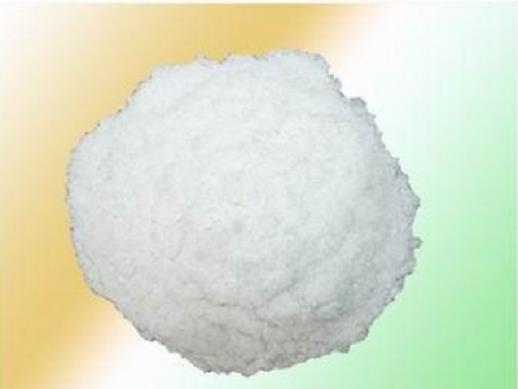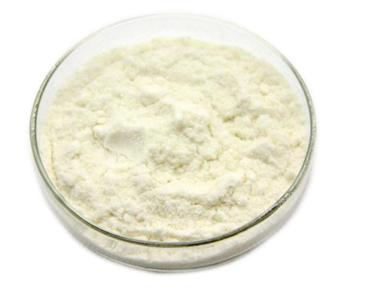What is PHMB?
Aug 12,2021
PHMB is best known for its broad-spectrum antimicrobial and antifungal activity. It is the standard of care for treatment of Acanthamoeba keratitis and an ingredient in multipurpose contact lens solutions, such as Renu (Bauch & Lomb, Rochester, NY). PHMB is a cationic disinfectant that is effective against Gram-negative and Gram-positive bacteria through its electrostatic interaction with negative sites on the lipopolysaccharide component of bacterial cell membranes. This interaction results in the disturbance of the cell membrane structure and leakage of the intracellular contents, leading to cell lysis. PHMB works in a similar fashion at a minimal concentration of 0.02% to be an effective treatment for Acanthamoeba keratitis by targeting the cystic form of the protozoa. It is also known to be minimally toxic to the corneal epithelium.

Uses
Polyhexanide (polyhexamethylene biguanide, PHMB) is a polymer used as a disinfectant and antiseptic. In dermatological use, it is spelled polihexanide (INN) and sold under names such as Lavasept, Serasept, Prontosan and Omnicide. PHMB has been shown to be effective against Pseudomonas aeruginosa, Staphylococcus aureus (also the methicillin-resistant type, MRSA), Escherichia coli, Candida albicans (yeast), Aspergillus brasiliensis (mold), vancomycin-resistant enterococci, and Klebsiella pneumoniae (carbapenem-resistant enterobacteriaceae).
Some products containing PHMB are used for inter-operative irrigation, pre- and post-surgery skin and mucous membrane disinfection, post-operative dressings, surgical and non-surgical wound dressings, surgical bath/hydrotherapy, chronic wounds like diabetic foot ulcer and burn wound management, routine antisepsis during minor incisions, catheterization, scopy, first aid, surface disinfection, and linen disinfection.
Safety
In 2011, Polyhexamethylenbiguanide (PHMB, Polyhexanide) has been classified as carcinogenic category 2 by the European Chemical Agency (ECHA). Products containing concentrations of 1% PHMB and more have to be declared as «suspected of causing cancer» and concentrations of 0.1% or above have to be noted in the safety datasheet. PHMB is allowed as a part of cosmetic products (max. 0.1%) if exposure by inhalation is impossible.
On the 20th of April 2018, the european commission decided to ban preservative uses of PHMB PT9 (Fibre, leather, rubber and polymerised materials preservatives). It’s still allowed for uses as disinfectants PT2 (Disinfectants and algaecides not intended for direct application to humans or animals). Furthermore, PHMB has been declared as a candidate for substitution by the ECHA.
- Related articles
- Related Qustion
- Poly(hexamethylenebiguanide)hydrochloride: The double-edged sword effect of highly effective antimicrobials Sep 26, 2024
Poly(hexamethylenebiguanide)hydrochloride is a safe and effective broad-spectrum antimicrobial agent and has the advantages of broad spectrum, high efficiency and stability.
- Polyhexamethylene biguanide hydrochloride---PHMB Jun 21, 2022
PHMB is recognized as the safest and most efficient broad-spectrum antibacterial agent in the 21st century. It is colorless and odorless, with low antibacterial concentration, broad-spectrum and low toxicity.
Sodium chloroacetate is a white to off-white crystalline powder with pungent smell,the melting Point is: 170 °C (338 °F). Decomposes slowly at 150 °C by localized heating.Sodium chloroacetate is stable at normal temperatures and pressure....
Aug 12,2021Organic ChemistryTetrahydropalmatine can be prepared from the total bases of tetrahydroxy berberine.....
Aug 12,2021APIPoly(hexamethylenebiguanide)hydrochloride
32289-58-0You may like
Poly(hexamethylenebiguanide)hydrochloride manufacturers
- Poly(hexamethylenebiguanide)hydrochloride
-

- $0.00 / 1kg
- 2026-01-12
- CAS:32289-58-0
- Min. Order: 1kg
- Purity: 99%
- Supply Ability: 20MT
- Poly(hexamethylenebiguanide) hydrochloride (PHMB)
-

- $0.00 / 25Kg/Drum
- 2026-01-12
- CAS:32289-58-0
- Min. Order: 100g
- Purity: ≥99% ≥20%
- Supply Ability: 2000mt
- Poly(iminocarbonimidoyliminocarbonimidoylimino-1,6-hexanediyl) hydrochloride
-

- 2026-01-12
- CAS:32289-58-0
- Min. Order:
- Purity: 0.99
- Supply Ability:






